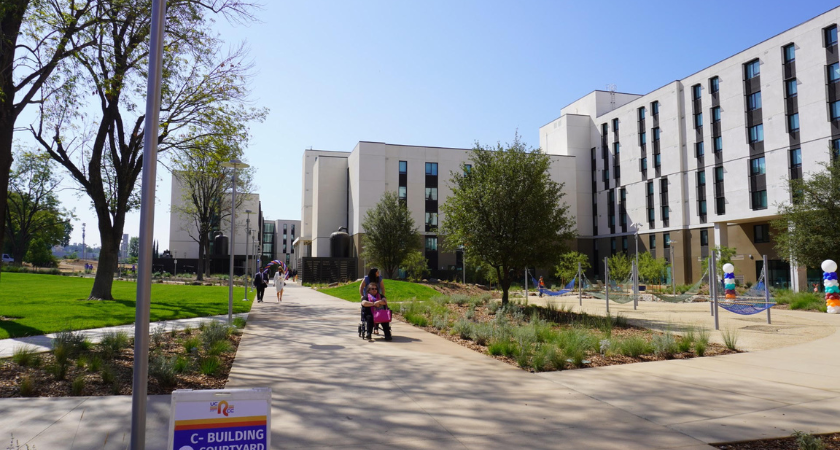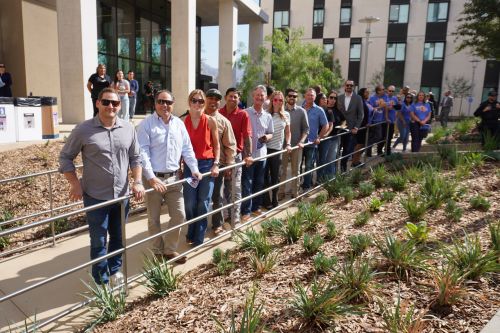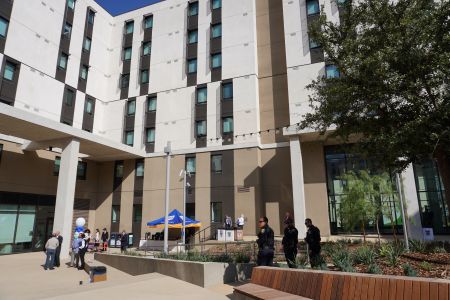
RIVERSIDE, Calif. — McCarthy Building Companies, Inc. has announced the completion of the North District Phase 2 Student Housing project at the University of California, Riverside (UCR). The $285 million development, which adds 1,568 new beds across 429 apartment-style units, is being recognized as one of the fastest-built student housing projects of its size in the nation.

Completed in just 21 months, the 424,000-square-foot development is the country’s first intersegmental public housing project, serving both UCR students and those from the Riverside Community College District (RCCD). The unique model allows community college students to access a four-year university environment, with the goal of boosting retention and academic success.
“This project represents a breakthrough in how we think about access to housing and education,” said Sarah Carr, Vice President at McCarthy. “By delivering high-quality, affordable housing in record time, we’re helping to expand opportunities for students across the region and creating a replicable model for institutions nationwide.”
Speed Through Innovation
McCarthy’s prefabricated cold-formed steel (CFS) wall and floor panels were central to the rapid construction pace. Fabricated off-site and installed just in time, the system enabled production of up to 18,000 square feet per week. Supported by lean scheduling, four cranes, and a 50-person CFS crew, the method allowed interiors to be built out early and ensured housing was ready for fall 2025 move-in.
The project had zero failed inspections, and inspectors praised the off-site quality control process as a model for future developments.
Design-Build Collaboration
The fast-track delivery was made possible by a design-build novation approach, aligning McCarthy, design partner Solomon Cordwell Buenz (SCB), and trade partners from the earliest stages. Real-time BIM coordination, early procurement, and overlapping design and construction activities cut months from the schedule while maintaining quality.
“These buildings serve as a physical embodiment of the unique commitment and partnership between UCR, and RCCD, to lift up and transform the lives of a deserving and diverse student body,” said Jacqueline Norman, UCR Campus Architect & Associate Vice Chancellor. “We are deeply appreciative of the commitment by McCarthy in making this remarkable project a reality.”
Student-Centered Living

The two seven-story, all-electric buildings were designed with both affordability and quality of life in mind. They feature:
- One- to four-bedroom apartments with kitchens, living rooms, air conditioning, and high-speed Wi-Fi
- Wellness-focused amenities, including study lounges, a fitness center, and courtyards
- A café/market and new recreation fields adjacent to a central park
The architecture reflects UCR’s mid-century character, with Norman brick, stucco, and exposed concrete. A defining feature is the monumental loggia, which provides shaded outdoor space and serves as a symbolic gateway to the campus.
“The North District 2 project, with its monumental pedestrian loggia, was always envisioned as both a literal and symbolic gateway to the UCR campus,” said Tim Stevens, Principal with SCB. “It is especially meaningful as a welcoming threshold for RCCD transfer students, embodying the spirit of an intersegmental campus community.”
Funding & Sustainability
The project received $126 million in state funding from California’s Higher Education Student Housing Grant Program, underscoring its mission to expand affordable access for underrepresented students.
Designed for LEED Gold certification, the development incorporates energy-efficient systems, water conservation strategies, and improved indoor air quality. It is UCR’s second all-electric housing complex, aligning with the university’s sustainability and carbon reduction goals.
Celebration & Impact
Campus leaders, community members, and project partners marked the achievement with a ribbon-cutting ceremony on September 29, 2025.
The project is expected to serve as a national model for speed, collaboration, and equity in higher education housing, proving that large-scale developments can be affordable, sustainable, and delivered on compressed timelines.
Originally reported by McCarthy Building Companies.





